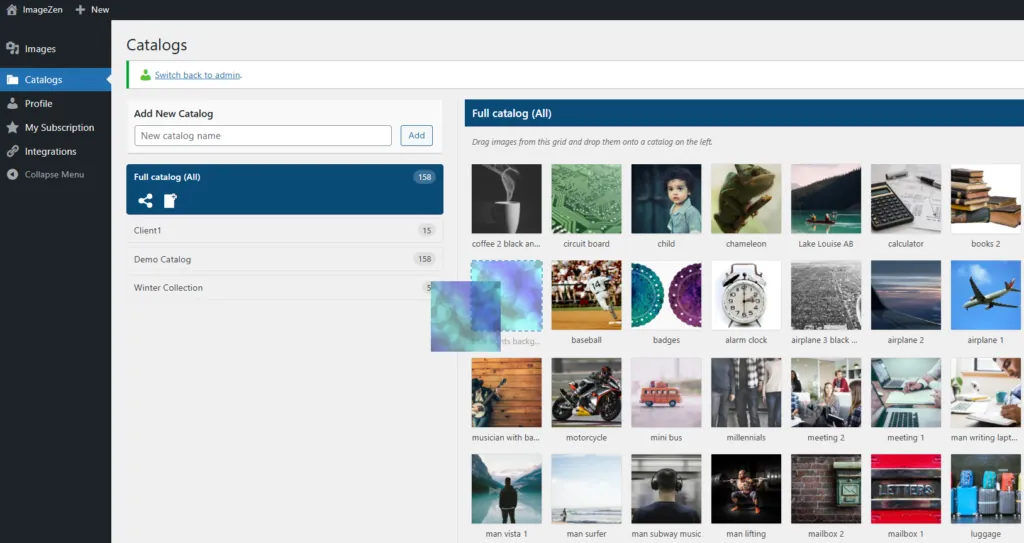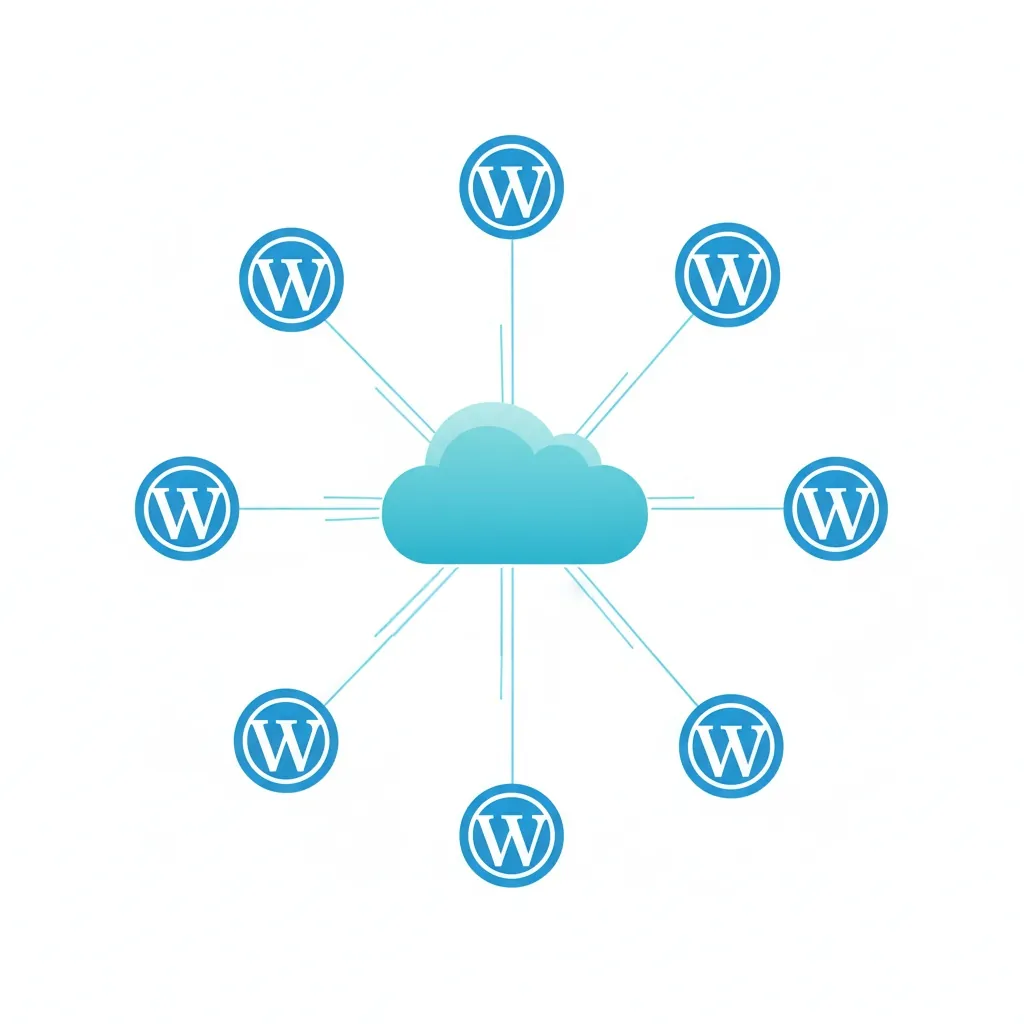Managing images across multiple WordPress sites is one of the most time-consuming challenges agencies and multi-site brands face. Whether you’re running independent WordPress installations for different locations, managing client sites, or operating multiple WooCommerce stores, keeping images synchronized manually is tedious, error-prone, and doesn’t scale.
If you’ve ever found yourself uploading the same image dozens of times or scrambling to update a logo across 20+ sites, you know exactly what we’re talking about.
Looking for a business-focused guide? If you want ROI calculations, agency workflow tips, and franchise-specific examples, check out our guide on how to update images across multiple WordPress sites.
The Problem: Why Manual Image Updates Don’t Scale
When you manage multiple independent WordPress sites, each site has its own media library. This means:
- Every image must be uploaded separately to each site
- Updates require manual work across all installations
- Brand inconsistencies happen when images get out of sync
- Time waste on repetitive tasks that could be automated
- Human errors multiply across sites (wrong version, incorrect sizing, outdated assets)
For agencies managing 10, 20, or 50+ client sites, this becomes a massive bottleneck. For franchises with locations across multiple cities, keeping brand assets consistent is nearly impossible without a better system.
Who Needs Multi-Site Image Sync?
Multi-site image synchronization solves technical challenges for organizations managing WordPress at scale. Here are the most common technical scenarios:
Digital Agencies Managing Client Portfolios
Agencies maintaining 10-50+ client sites need centralized asset management for brand consistency. Technical requirements include:
- Cross-site image propagation without manual FTP uploads
- Version control for client brand assets
- Team access management across multiple WordPress installs
- Compatibility with various hosting providers and WordPress configurations
Enterprise Multi-Brand Operations
Large organizations running multiple WordPress properties (corporate site, careers portal, investor relations, regional sites) require synchronized brand assets across independent WordPress installations. Technical challenges include:
- Managing images across different hosting environments
- Maintaining brand consistency without WordPress Multisite constraints
- Automated image updates across geographically distributed sites
- Integration with existing WordPress workflows and page builders
SaaS Companies with Regional Deployments
Software companies operating regional WordPress sites (US, EU, APAC instances) need synchronized product screenshots, feature images, and UI assets across all deployments while maintaining separate databases and hosting infrastructure.
Educational Institutions
Universities and school districts managing department sites, campus sites, or district-wide WordPress networks need centralized management of institutional branding, event images, and administrative assets across independent WordPress installations.
Traditional Solutions (And Why They Fall Short)
The Core Problem: WordPress Has No Native Multi-Site Image Sync
Whether you’re running independent WordPress installations or a WordPress Multisite network, each site maintains its own separate media library. WordPress has no built-in way to share or synchronize images across multiple sites – regardless of your setup.
This means manual uploads are required for every site, whether you have 5 independent installs or 50 sites in a Multisite network.
Manual FTP/SFTP Uploads
Some teams upload images via FTP directly to each site’s wp-content/uploads folder:
- No WordPress integration – Images don’t appear in Media Library
- Database entries missing – WordPress doesn’t know the files exist
- Attachment metadata lost – No thumbnails, alt text, or size variations
- Time-consuming – Still requires accessing each site individually
Cloud Storage Plugins
Plugins that offload media to AWS S3, Google Cloud, or similar:
- Single-site focused – Each site still manages its own library
- No synchronization – Images aren’t shared across sites
- Migration complexity – Moving existing images is tedious
Custom Scripts/WP-CLI
Developers sometimes write custom scripts:
- Maintenance burden – Breaks with WordPress updates
- Technical expertise required – Not accessible to non-developers
- No user interface – Command-line only
- Fragile – Plugin conflicts and edge cases
Understanding WordPress Media Library Architecture
To understand why multi-site image sync requires a specialized solution, you need to understand how WordPress handles media files at the architectural level.
How WordPress Stores Media Files
Each WordPress installation maintains its own media library with three core components:
- File System Storage: Images are stored in
/wp-content/uploads/organized by year/month subdirectories - Database Records: Metadata stored in the
wp_poststable (post_type = ‘attachment’) - Attachment Metadata: Image dimensions, file paths, and thumbnails stored in
wp_postmeta
This architecture is isolated per WordPress installation. There is no native mechanism for cross-site media synchronization.
WordPress Multisite Limitations
Even WordPress Multisite, which allows managing multiple sites from one dashboard, maintains separate media libraries for each subsite. While all subsites share the same database and file system, each site’s media library is isolated:
- Site 1 uploads go to
/wp-content/uploads/sites/1/ - Site 2 uploads go to
/wp-content/uploads/sites/2/ - No cross-site media visibility or synchronization
Plugins like Network Shared Media or Multisite Global Media can share media across a Multisite network, but they only work within a single WordPress Multisite installation—not across independent WordPress installs on different servers or hosting providers.
The Technical Challenge
Synchronizing images across multiple independent WordPress installations requires:
- External image storage: A centralized repository outside any single WordPress install
- API-based synchronization: Programmatic communication between the central repository and each WordPress site
- WordPress plugin integration: A lightweight plugin on each site to handle sync operations
- Database coordination: Proper attachment post creation and metadata management on each site
- CDN delivery: Efficient image delivery without duplicating files across servers
This is why manual solutions (FTP, cloud storage links) and WordPress-native approaches fall short for true multi-site image management.
What You Actually Need: Centralized Image Management
The ideal solution for syncing WordPress media libraries across multiple sites should:
- Work with any WordPress configuration – whether you have independent installs, WordPress Multisite networks, or a mix of both
- Integrate with WordPress Media Library – Seamless workflow
- Update once, sync everywhere – Change an image in one place, it updates across all sites
- Support WooCommerce – Product images sync automatically
- Automatic optimization – WebP conversion, CDN delivery
- No technical complexity – Simple plugin installation
- Unlimited sites – Scale without restrictions
How Modern Image Sync Works
Modern WordPress image synchronization solutions use a hub-and-spoke model:
The Hub (Central Image Repository)
- All master images stored in one location
- Team members upload/manage images centrally
- Single source of truth for all brand assets
- Organized by client, project, or category

The Spokes (Individual WordPress Sites)
- Each site installs a lightweight sync plugin
- Plugin connects to the central hub
- Images automatically appear in WordPress Media Library
- Updates propagate instantly when hub images change
The Benefits
- Update once – Change an image in the hub, all sites update
- Brand consistency – Everyone uses the same approved assets
- Time savings – No more repetitive uploads
- Error reduction – No wrong versions or outdated images
- Team collaboration – Multiple people can manage the central hub
- Performance – Images delivered via CDN, optimized automatically
Implementation Checklist
If you’re evaluating an image sync solution, here’s what to look for:
Must-Haves:
- ✅ Works with any WordPress configuration – whether you have independent installs, WordPress Multisite networks, or a mix of both
- ✅ WordPress Media Library integration
- ✅ WooCommerce compatibility
- ✅ Automatic image optimization (WebP, compression)
- ✅ CDN delivery for performance
- ✅ Simple plugin installation
- ✅ No limit on number of sites
- ✅ Private catalogs for client organization

Real-World Impact
Agencies using centralized image sync report:
- 70-80% time savings on image management tasks
- Zero brand consistency errors across client sites
- Faster client approvals – update once, done everywhere
- Scalability – can take on more clients without adding overhead
Franchises see:
- Instant corporate asset distribution to all locations
- Guaranteed brand compliance across all franchise sites
- Reduced support tickets from franchisees about images
Technical Implementation with ImageZen
ImageZen provides a technical solution specifically designed for WordPress multi-site image synchronization. Here’s how it works at the architectural level:
Architecture Overview
- Centralized image repository: Images stored on AWS S3 with CloudFront CDN delivery
- API-based sync: RESTful API handles communication between ImageZen and WordPress sites
- WordPress plugin: Lightweight ImageZen WP Sync plugin installed on each site
- Automatic WebP conversion: Images optimized to WebP format (except SVG/AVIF) for performance
- Media Library integration: Synced images appear natively in each site’s WordPress Media Library
Setup Process
- Create ImageZen account: Set up your centralized image hub at imagezen.net
- Create catalogs: Organize images by client, project, or brand
- Upload images: Add images to catalogs (automatic WebP optimization, max 2MB per image)
- Install plugin: Add ImageZen WP Sync plugin to each WordPress site (available in WordPress plugin repository)
- Connect sites: Link each WordPress installation to your ImageZen catalog via API key
- Initial sync: Images sync to each site’s Media Library (1-5 minutes per site depending on image count)
Technical Requirements
- WordPress 5.0 or higher
- PHP 7.4 or higher
- HTTPS enabled (required for API communication)
- Outbound HTTPS connections allowed (for API sync)
- Compatible with any WordPress hosting provider
- Works with WordPress Multisite and independent installs
Supported File Types
JPG, PNG, GIF, BMP, WebP, SVG, AVIF. Maximum upload size: 2MB per image. Animated GIFs convert to static WebP.
Ready to implement centralized image sync for your WordPress sites? Start with 5 free images to test the technical integration.

